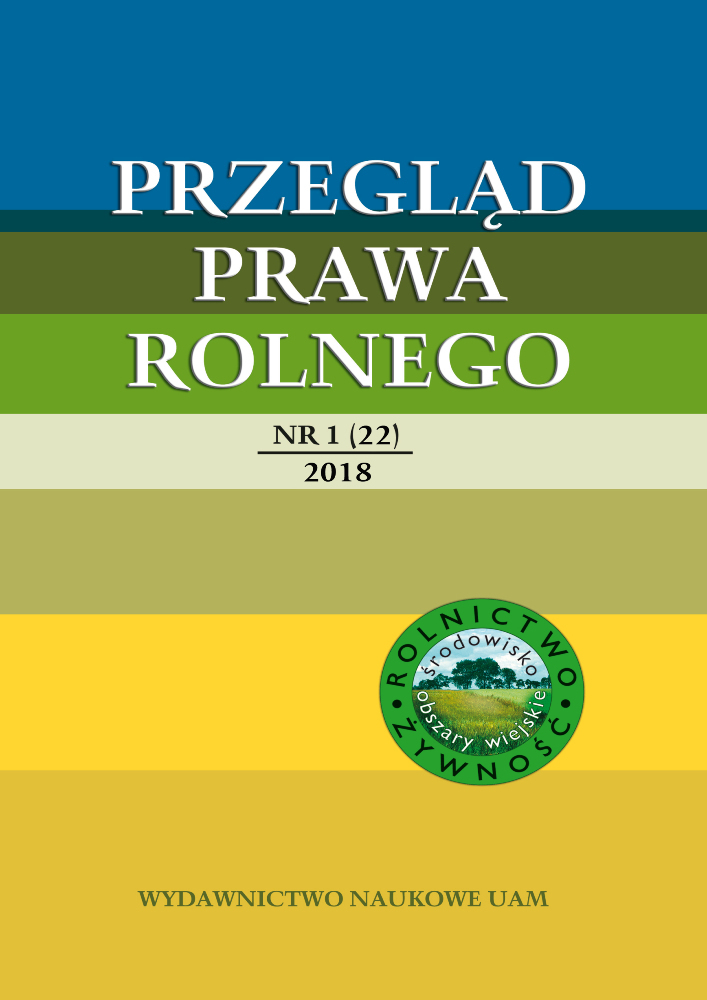Abstrakt
Designations of Origin and Geographical Indications are two quality titles covered by EU legislation for the protection of agricultural products and foodstuffs whose quality is linked to a specific territory. In spite of being two different titles, the similarities between them are evident, and, since the EU regulations do not establish priority or incompatibility between them, it is possible that both protection instruments can apply in the same territory to designate the same type of product. This is actually the case in the province of Jaén, in southeastern Spain, where three Protected Denominations of Origin (PDOs) are threatened as a result of the application for registration of a Protected Geographical Indication (PDI) that intends to act at the provincial level for designating the same product: extra virgin olive oil. In this study we analyse this case and formulate some general recommendations of possible solutions that might allow a peaceful coexistence between these two titles of protection.
Bibliografia
Albisinni F. (2012), Wines, en L. Costato, F. Albisinni (dir.), European Food Law, Milán.
Botana Agra M.J. (2001), Las Denominaciones de Origen, en Olivencia, Fernández-Nóvoa, Jiménez de Parga (dir.), Jiménez Sánchez G. (coord.), Tratado de Derecho Mercantil, vol. 2: Las Denominaciones de Origen, Barcelona.
Casado Cerviño A. (1990), La nueva ley española de marcas, nombre comercial y rótulo de establecimiento. Razones para una reforma. Concepto de marcas. Signos, “AC” num. 4.
Casado Cerviño A., Cerro Prada B. (1994), GATT y propiedad industrial, Madrid.
Fernández-Nóvoa C. (1970), La protección internacional de las denominaciones geográficas de los productos, Madrid.
Gómez Lozano M.M. (2004), Denominaciones de Origen y otras Indicaciones Geográficas, Navarra.
González Botija F. (2003), El régimen jurídico de los vinos de calidad producidos en regiones determinadas, Barcelona.
Guillem Carrau J. (2008), Denominaciones Geográficas de Calidad. Estudio de su reconocimiento y protección en la OMC, la UE y el Derecho español, Valencia.
López Benítez M. (1996), Las denominaciones de origen, Barcelona.
Maroño Gargallo M.M. (2002), La protección jurídica de las denominaciones de origen en los derechos español y comunitario, Madrid.
Martínez Gutiérrez A. (2008), La tutela comunitaria de las denominaciones geográficas. Conflictos con otros signos distintivos, Barcelona.
La designación del origen geográfico en la comercialización de los aceites de oliva. Especial referencia a la viabilidad jurídica de las marcas oleícolas de carácter geográfico, Analistas Económicos de Andalucía, Málaga 2011.
Organización Mundial de la Propiedad Intelectual, Principios Básicos de la Propiedad Industrial. Publicación de la OMPI N° 895(S), www.wipo.int.
Documento SCT/8/4, de 2 de abril de 2002, del Comité Permanente sobre el Derecho de Marcas, Dibujos y Modelos industriales e Indicaciones Geográficas de la OMPI, www.wipo.int.
Palomeque Messía F., Palomeque Ruiz F.R., Montes Tubío F., Burgos Ladrón de Guevara E. (2013), Tipos de Aceite de Oliva, en F. Palomeque Messía, Martínez Gutiérrez, Vílchez Quero, Rodríguez Navarrete (coords.), El Olivar y su Aceite, Jaén.
Licencja
Prawa autorskie (c) 2018 José Ramón Sánchez Jaraba

Utwór dostępny jest na licencji Creative Commons Uznanie autorstwa – Na tych samych warunkach 4.0 Miedzynarodowe.





